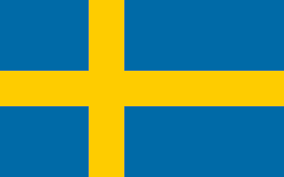Sweden occupies the greater part of the Scandinavian Peninsula. Covering an area of approximately 450,000 km2, with a coastline of 3,218 km and land boundaries of almost 2,211km, is the fifth-largest country in Europe, located at its northern part. Lying between the Gulf of Bothnia and the Baltic Sea, it borders with Norway to the west and Finland to the northeast. Stockholm is the capital and largest city of the country, with more than 850,000 population. Other large cities are Gothenburg and Malmö.
Sweden has not been occupied since the beginning of the 16th century, while it emerged as a major regional military power, during the 17th century. Since 1814 – following the end of the Napoleonic wars-, Sweden has declared neutrality, which during the World Wars I and II, was challenged many times. While being cut-off from foreign imports during the World War II, Sweden’s defence industry pursued becoming self-sufficient; in addition, taking advantage of its geographic position and the already well-developed infrastructure –rail systems and highways-, Sweden managed to establish itself as a centre of commerce, trade and energy transportation, playing a key role in the Baltic Sea region, up until today. Swedish economy was stretched in the 1990s –due to high unemployment-, as well as in the 2009 economic crisis. However, the stable bases on which the country’s economy has been structured, in conjunction with the exercised fiscal discipline, allowed the nation to overcome the associated economic barriers.
Nowadays, the 9.9 million Swedish inhabitants, enjoy a high level of living, as a result of a well-structured governance, based on minimisation of social inequalities and translating into the provision of social and economic benefits to the country’s people. With privately owned firms accounting for about 90% of industrial output, the public sector has played a vital role towards the preservation of a welfare state, while securing at the same time the provision of health, medical care and elderly care services, as well as a novel educational system for all the citizens.
With an HDI ranking –showcasing the inequality levels of a country- placing it at the 14th place (in 2014) worldwide with a value of 0.907, Sweden has recorded (over the period 1980-2014) progress comparable to those of the Netherlands and New Zealand, admitting the Scandinavian nation to the “very high human development” countries group.
Investments in jobs, schools, climate change adaptation and energy, as well as reforms for the increased welfare and security of the citizens, in addition to better reception and quicker introduction of people seeking asylum in Sweden, are the main priorities of the Swedish Government. Within this context, in the 2016 budget bill, increased anti-terrorism measures and further funds for defence were proposed.

